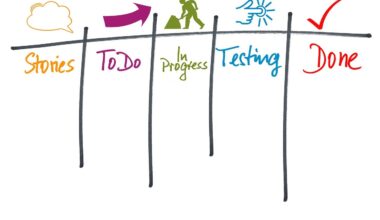Social Listening for Product Development Insights
Understanding customer needs through social listening is essential for successful product development. By actively monitoring conversations online, brands can gather in-depth insights about consumer preferences, desires, and pain points. Key platforms for gathering this information include social media channels, forums, blogs, and review sites. Employing social listening tools enables companies to track brand mentions, relevant keywords, and industry trends. Analyzing user-generated content helps reveal patterns and sentiments that highlight opportunities for product enhancements. Additionally, monitoring competitors’ activities provides valuable benchmarks for innovation. Engaging in conversations with your audience not only boosts brand loyalty but also fosters an ongoing dialogue that can lead to new ideas. By leveraging these insights, brands can create products tailored to meet customer demands effectively. This powers iterative development cycles, enabling businesses to adapt quickly to changing market conditions and preferences. In this ever-evolving landscape, responsiveness and adaptability become crucial for retaining a competitive edge. Therefore, integrating social listening into product development is no longer optional but a necessity for brands dedicated to achieving meaningful growth.
Social listening opens up avenues for identifying trends and sentiment shifts among target audiences. Tracking discussions surrounding specific topics, keywords, or brands reveals key insights into what resonates most with consumers. By categorizing this feedback, businesses can determine which features or improvements are most desired by customers. Continual assessment of social media provides brands with a real-time pulse of customer sentiment, allowing them to adjust their strategies accordingly. The data gathered can direct marketing efforts to address consumer concerns and highlight product strengths or unique selling points. Social listening also assists in discovering emerging trends that may influence future product releases or features. For example, if multiple users express interest in eco-friendly products, businesses can pivot development or marketing to emphasize sustainability. This agility ensures products resonate with consumer values and preferences, increasing their chances of success in the market. Employing a strategic approach to social listening not only informs product evolution but also enhances overall brand reputation. Authentic engagement with customers tells them their voices are heard, cultivating trust and loyalty that can significantly contribute to long-term brand success.
To effectively leverage social listening for product development, it is vital to utilize the right tools. There are numerous analytics software options available to assist in tracking social media activity and extracting valuable data. These tools often offer comprehensive dashboards that simplify tracking overall brand health and sentiment analysis. Popular social listening platforms include Brandwatch, Hootsuite Insights, and Sprout Social. Each tool varies in features, pricing, and complexity, making it crucial to select the one that aligns with your business goals. Once implemented, these tools can generate reports that illuminate customer perceptions and expectations clearly, enabling informed decision-making. Analyzing competition and market landscape through these platforms is another significant advantage. Integrating findings from social listening into product roadmaps enhances innovation. Frequent adjustments based on real customer feedback lead to higher satisfaction rates. In highly competitive sectors, the first brand to address consumer demands often steals market share. Therefore, acknowledging the importance of social listening can play a pivotal role in successful product launches and sustained growth. Businesses should prioritize analysis and implementation to remain relevant within their industries.
Creating Targeted Feedback Loops
Incorporating social listening strategies creates targeted feedback loops that are essential for product development. Feedback from customers can inform necessary adjustments and help refine product offerings. Actively listening to customer feedback and engaging with them builds trust and promotes strong relationships. Establishing an ongoing dialogue encourages users to share their experiences, whether positive or negative. Companies can ensure that they are responsive to complaints or constructive criticism, demonstrating their commitment to customer satisfaction. Feedback loops also assist in evaluating marketing effectiveness; if audiences engage less with certain campaigns, brands can pivot strategy accordingly. Creating surveys or inviting direct communication channels via social media enhances engagement. Social media polls, Q&A sessions, or simply asking users to share their thoughts on products can yield insightful data. Leveraging these interactive initiatives not only builds community but accelerates product improvement cycles. As customers feel directly involved in the development process, they become invested in the product’s success. Ultimately, strengthening the bond with customers through these feedback loops leads to greater brand loyalty and long-term success.
Beyond individual products, social listening can unlock insights relevant to the entire brand portfolio. By triangulating data from various platforms and sources, companies can unearth broader trends affecting numerous offerings. Analyzing sentiment data across different brands helps in understanding brand perception at a higher level. This macro perspective allows organizations to identify potential gaps in their product ranges or even entirely new markets emerging from consumer demand. Patterns associated with demographic segments can be helpful to tailor marketing and product strategy. It’s imperative to connect the dots between social insights and strategic planning. Leadership teams should be informed about pressing consumer priorities and emerging opportunities illuminated by social listening. Moreover, fostering a culture centered around data-driven decisions promotes agility and responsiveness. Organizations that continuously integrate insights from social conversations into their core strategies are better poised to meet evolving needs. This commitment to being customer-centric can significantly influence brand identity, loyalty, and market perception. By examining the entire brand ecosystem, organizations can establish themselves as true industry leaders, making data-informed decisions that resonate positively with consumers.
The Role of Data Analysis in Product Development
Data analysis serves as the backbone of informed product development strategies shaped by social listening. It transforms a vast array of qualitative feedback into actionable insights that drive decision-making processes. Deep diving into user-generated content allows brands to detect not only sentiments but also trends, demographics, and regional preferences. Various analytical techniques, such as sentiment analysis and keyword tracking, facilitate the extraction of meaning from discussions online. Understanding the context behind customer comments is crucial to deciphering their needs accurately. Additionally, competitive analysis enables brands to assess the effectiveness of their rivals’ product offerings. Businesses can draw on lessons learned from competitors’ successes and failures, leading to more effective product strategies. Collaborating with data analysts or employing third-party services ensures that insights extracted reflect current market dynamics accurately. As companies innovate based on these insights, they cultivate a flexible product development framework responsive to customer feedback. Ultimately, robust data analysis yields richer insights, guiding products that align closely with customers’ evolving expectations, thereby enhancing market reception and customer satisfaction rates.
The future of product development lies in integrating social listening into all organizational functions. By moving beyond traditional product development methods, brands can leverage real-time data to remain at the forefront of innovation. Fostering cross-departmental communication enhances product responsiveness and alignment with consumer needs. Marketing, sales, and product development teams should collaborate closely, ensuring that feedback collected is disseminated effectively throughout the organization. Establishing a clear social listening framework can enhance accountability among teams, streamlining processes around how data is shared and acted on. Creating initiatives that prioritize customer insights requires commitment at all organizational levels. Continuous monitoring ensures companies remain adaptable, swiftly responding to shifts in consumer behavior. Engaging with customers openly on social platforms concerning product development also instills a sense of community and shared ownership. Furthermore, brands that leverage social listening can cultivate a proactive culture where adaptation becomes second nature. The willingness to listen actively, learn, and implement changes is what ultimately sets successful companies apart. Embracing social listening as a core strategic tool is an investment that pays dividends in shaping successful products aligned with customer expectations.
This strategic approach fosters a culture prioritizing customer-centric practices that effectively guide product development. Strong relationships with consumers nurtured via active social listening lead to increased brand loyalty. Organizations will benefit from regular engagement with their audience by tapping into this wealth of insights driving sustainable growth over time. Ultimately, businesses that master social listening are poised not only to create exceptional products but also to position themselves as innovative leaders. Establishing effective mechanisms for incorporating consumer feedback into their product development strategies necessitates commitment. Companies should prioritize continuous improvement based on social insights and adapt long-term strategies effectively. By making consumer experiences central to their offerings, organizations can deliver solutions that truly address needs and resonate emotionally with target audiences. Social listening is more than just a tool; it’s an essential part of sustainable product development that ensures businesses can keep pace with evolving demands. Companies willing to integrate these strategies seamlessly into their operations will enjoy long-term success defined by authenticity and customer alignment. Thus, social listening serves as the cornerstone for informed product development and provides the necessary foundation for brands striving to excel in today’s competitive market landscape.





